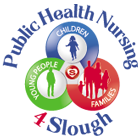ACTIVITIES TO DEVELOP EXPRESSIVE LANGUAGE SKILLS IN OLDER CHILDREN
Barrier games
This can be used for both talking and listening. The child or children either side of the barrier have identical sets of equipment.
One child has a picture or constructs an assembly of objects and then gives instructions to the other to enable him/her to duplicate the picture or assembly.
How do I feel?
In a small group imagine a situation and talk about how you would each feel and what you might say (speech bubbles resource is good here).
Silly Stories
Collection of objects/pictures, e.g., horse, lady, man, child, dog, ball, pirate, dinosaur. Adult starts story “Once upon a time there was a dinosaur”. Next child (house) continues the story “He lived in a house made of chocolate”. Next child (ball) “One day he found a ball under his bed” …
Narrative
Colour Coding approach. Children take one colour question ‘Who, What, Where, When’ and sequence a story using their own ideas. For more information, visit http://www.talkingpoint.org.uk/resources/colourful-stories
Mind Map Activities
An excellent way for supporting new vocabulary and talking.
Defining and describing
Have a range of objects in a bag or a range of pictures. One child takes an object or picture and is allowed to give 3 pieces of information to describe their item. The rest guess.
Question Question
Barrier game. One child has an object or picture and the rest ask questions to find out what it is. You cannot say the name of the item.
A good resource is Guess Who?
What do you know?
Use a composite picture and take turns in the group (mini circle time). Each child gives a new piece of information about the picture. Extend by talking about a particular object or event in which everyone has been involved.
Tell me how to do it
Use a classroom activity or event which has already been experienced and get a child to re-tell the event in his/her own words.
Allow a child to explain to the others how to play a particular game.
Developing story telling (narrative) skills
- Expose children from an early age to stories.
- Talk about the ‘beginning, middle and end’ of stories you read together.
- Use visual resources e.g. a story frame to think what happened first, next, then and last.
- Make good use of question forms such as ‘Who, What, When, Where & Why” to develop reasoning skills.
- To encourage inferencing and predictions, ask questions such as: What could they have done differently? How could they have done things better? What do you think they mean by that?
TOP TIP: Ask your Speech and Language Therapist about the Blacksheep resources to support narrative skills.
Sequencing skills
Sequencing is an essential skill which underpins many aspects of speech and language. It is the ability to recognise and predict pattern and order. We need sequencing skills to give information such as telling someone about a specific event.
Speech and language is all about sequences:
- Sounds in words
- Words in sentences
- Recalling a sequence of events
- Describing a sequence of actions
- Following a sequence of instructions
- Rote sequences such as days of the week, numbers, alphabet
As children approach school age they will need to learn the special vocabulary of sequencing, words such as start, next, finish or first, second, third.
TOP TIP: Some general work on sequencing will be beneficial for all children but particularly for children with specific speech and language difficulties such as dyspraxia.
Visual sequencing activities
There is often more than one word that can be used in sequencing e.g. first or start, middle or next etc. It is therefore important to decide, in planning, the vocabulary you will use. Use this regularly and consistently, allowing for lots of opportunities for repetition. Make sure that everyone uses the same vocabulary. Begin with visual pattern experiences.
Display visual timetables depicting the routine of the pre-school/school. If the pictures are velcroed to the wall the children can sequence the events themselves.
Copy and continue patterns of two items:
- Pegs in a peg board
- Threading cotton reels/beads
- Building a tower of bricks
- Clothes on a washing line e.g. sock, glove
- Lining up – boy, girl
- Line up coloured cars and trains, farm animals
- Compare bears, mini motors, mini fruits etc.
Increase the number of objects as the child becomes more competent.
In group games encourage children to copy an action after you. Introduce another one, then see if the child can sequence the actions e.g. wave, then clap. Puppets could also be used to demonstrate the actions.
Dressing and undressing skills are useful to encourage a child’s ability to sequence. They need to know the order in which the clothes are put on. This can be practised when getting undressed for P.E. or dressing a doll or teddy. Commercially made picture games can also be used.
Auditory sequencing activities
This involves the child following sequences of information that they have heard rather than seen.
- Make sequences with all sorts of noise makers/musical instruments (seen and heard)
- Copy the sounds of two different animals in sequence e.g. moo, quack, moo, quack.
- Action songs and rhymes e.g. Heads, Shoulders, Knees and Toes.
- Make sequences of speech sounds related to Jolly Phonics pictures – p, s, p, s. You could make this into a game e.g. race track or ladder. Make sure the child can make the sounds you incorporate.

